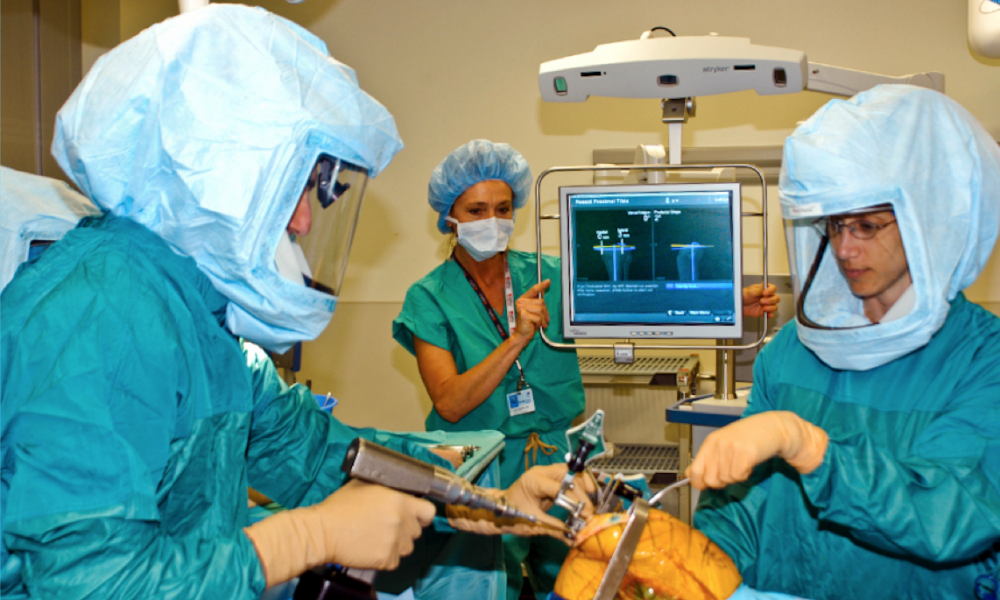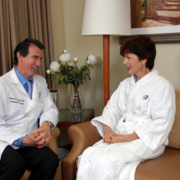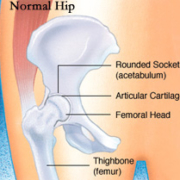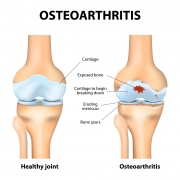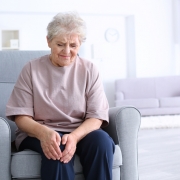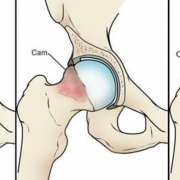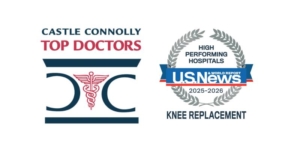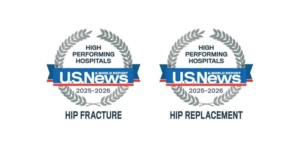Computer Assisted Total Knee Replacement Surgery
In my previous blog, I discussed the need for Total knee replacement (TKR), primarily when the joint needs to be resurfaced and realigned to address knee pain and disability due to angular deformity and the loss of cartilage.
TKR surgery is the most common joint replacement procedure being preformed. During TKR, an arthritic joint is resurfaced, any angular deformity is corrected and the soft tissues, which support the knee, are re-balanced. This reliably relieves pain and allows the patient to become very active again. Osteoarthritis is by far the most common diagnosis that leads to the need for TKR surgery. Although there are many reasons why people develop degenerative osteoarthritis in the knee, the common result is the breakdown of the normal hyaline cartilage that covers the bones that make up the knee: the lower end of the femur bone, the upper end of the tibia and the underneath surface of the knee cap (the patella).
The knee is much more than a large hinge joint. In a normal, well-functioning knee, the alignment of the knee ensures that weight bearing forces are distributed equally between the inside (medial compartment) and the outside (lateral compartment) of the joint. Also, the tension on the tissues that make up the soft tissue sleeve that supports the knee are equal on the inside and outside throughout the range of motion. The knee’s cruciate ligaments help assure that during normal flexion and extension, the knee pivots around the medial compartment as it moves. When the cartilage is injured and breaks down on one side of the joint, the space between the bones decreases and the joint no longer is aligned. Left untreated, these weight bearing forces progressively worsen the knee deformity. Eventually, the bones break down and flatten and the patella no longer tracks centrally.
A total knee replacement may be appropriate when arthritis has progressed to the stage where non-operative treatments no longer are effective. Critical to obtaining a prefect result is resurfacing the worn out bone ends so they don’t continue to compress together (bone on bone deformity) and realigning the limb so that weight bearing forces are again equalized between the inside and the outside of the joint. This helps to restore normal movement of the knee (called kinematics).
Traditionally, surgeons have used mechanical instruments and relied heavily on visual or anatomic landmarks, which require surgeons to make certain assumptions when performing the procedure. Unfortunately, these assumptions depend on “surgeon experience” and “the best guess technique” and are prone to errors. This often leads to alignment and balancing errors and components that are not optimally positioned, making these the most common reasons why many people who have had TKR surgery still have pain and may require re-do or revision surgery.
In my experience, computer assisted navigation for TKR has been a “game changer” because it vastly improves the accuracy and reliability of performing this surgery. Computer assisted navigation works similarly to a directional tracking or GPS system that we now commonly use in cars, boats and planes. Infrared trackers act like satellites, constantly monitoring the position of special markers and instruments. The system collects data and transfers it to computer in the operating room that supplies the surgeon with the precise measurements of a patient’s unique anatomy. The surgeon visualizes on a monitor the exact dynamic image of the patient’s anatomy and then makes vital decisions in “real time.” This enhances the surgeon’s accuracy for removing the exact amount, level and angle of bone necessary, as well as creates the most favorable positioning to accept the new prosthesis. All this is accomplished while correcting limb alignment and optimizing soft tissue balance.
We’ve all heard the old adage, “a good carpenter measures twice and cuts once.” With the computer navigation system, a surgeon can see the optimum bone cuts and component positioning before any cuts are made. This results in better precision and reproducibility. With computer assisted navigation, we now have the ability to more accurately restore knee functionality and pain-free quality of life for our patients.
We thank you for your readership. If you would like a personal consultation, please contact our office at 954-489-4575 or by email at LeoneCenter@Holy-cross.com.

